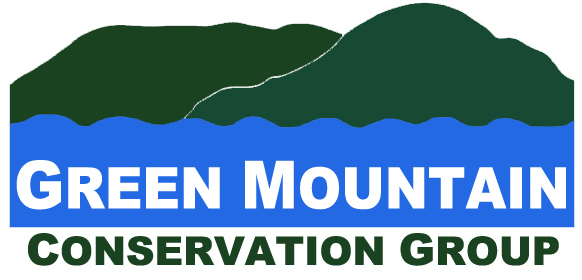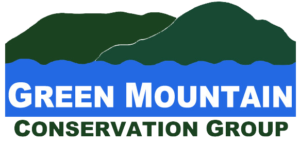Welcome to GMCG’s virtual Less Plastic Day activity page!
Every year since December 19, 2016 GMCG has celebrated Less Plastic Day. On this day we make a special effort to advocate and share information about reducing our plastic waste and it’s negative impact on planet Earth.
Below you will find links to videos and activities to inspire the use of less plastic.
GMCG Plastic Informational Video…what is plastic? Where does it come from? Where does it go?:
Take GMCG’s Kahoot Quiz on plastics to find out how much they know and learn some facts about plastic: https://create.kahoot.it/share/gmcg-less-plastic-initiative/9e7d5b53-c3f4-4924-ad1b-0a0a665bcd06
Microplastics in Bottled Water vs. Tap Water video (4:45 minutes): In this video, microplastics are examined under a microscope from filtered water samples of tap water, bottled water, and lake water. The tap water and bottled water samples were compared for the abundance of microplastic fragments in each. The bottled water sample was determined to have a greater frequency of microplastic fragments, likely coming from the bottle itself leeching into the water. The tap water sample had less, but still contained microplastic samples. As a comparison, lake water was examined and microplastics were found in that sample as well. This quick observational study goes to show that microplastics are being found in almost any environment at this point in time, and this information is backed up by scientific studies. A few scientific studies are linked in the video at the end for additional reading and resources. This video is designed to show what a microplastic fragment might look like under a microscope, and talk about the fact that drinking bottled water will likely lead to more microplastic consumption, and add additional waste into the environment.
Articles to read:
Let’s set a goal of Zero Waste
How Big Oil Misled The Public Into Believing Plastic Would Be Recycled
https://www.npr.org/2020/09/11/897692090/how-big-oil-misled-the-public-into-believing-plastic-would-be-recycled
https://www.nhpr.org/post/exploring-myths-plastic-recycling#stream/0
Which plastics are recyclable, and which are not?
https://eponline.com/articles/2020/01/16/which-plastics-are-recyclable-and-which-arent.aspx?m=1
Kenyan recycles plastic waste into bricks stronger than concrete
https://www.reuters.com/article/us-kenya-environment-recycling/kenyan-recycles-plastic-waste-into-bricks-stronger-than-concrete-idUSKBN2A211N
And…stories and crafts for kids, some of which have a holiday theme:
“Tammy Turtle: A Tale of Saving Sea Turtles” Children’s Book Reading (8:29 minutes): In this video, GMCG’s Education and Outreach Assistant EB Brandt reads the story of Tammy Turtle. This story highlights the lifecycle of a turtle and the dangers of plastic waste entering the ocean and being consumed by wildlife.
“One Plastic Bag” Children’s Book Reading (9:26 minutes): GMCG’s Education and Outreach Assistant EB Brandt reads “One Plastic Bag” that describes the true story of women in Gambia up-cycling plastic bags into sellable items.
Bioplastic Ornament Making video (5:58 minutes): This experiment can be done at home with some simple ingredients. It covers an array of science topics that include precipitation reactions and polymers in chemistry, plastic waste and usage, pH, and solutes and solvents. Combining vinegar with milk as the reactants in a precipitation reaction will cause the ingredients of milk, whey and casein, to separate from each other. The casein that was mostly soluble in milk is now insoluble and precipitates out of solution as the solid substance. Since vinegar is the acidic liquid it caused this reaction by lowering the pH of the liquid mixture as a whole. Each casein molecule is a monomer and chains of casein molecules are called polymers. Polymers are a primary ingredient in what makes up plastic products that are so readily available in the world today. The plastics that we are used to using do not degrade in the environment which makes them very problematic for wildlife and habitats with encroaching development and increased usage of plastics. Casein is a form of plastic that actually does biodegrade in the environment and it was used in ancient times up until the end of the 1800’s. Now most plastics are petroleum-based plastics which cause many problems for the environment.
Upcycled T-shirt Bag Making (7:33 minutes): In this video GMCG Education Coordinator Tara Schroeder goes over how to upcycle your old T-shirts into reusable bags! Perfect for replacing single use bags and a reusing old material, this craft is thrifty and will help the environment.
Plastic Bag Pom Pom Ornament Making (9:16 minutes): This is a fun craft where kids learn how to make a fluffy plastic pom-pom. These can become ornaments, decorations, or toys.
Plastic Bag Wreath: Great for the holiday season, this easy craft will allow kids to turn single use plastic bags into a festive wreath. https://docs.google.com/document/d/1MunUna6yMf2cE4MRXIVcXd6WcAMSlMM90QZ7SsZA31c/edit
GMCG’s Recycling Game: https://scratch.mit.edu/projects/484091722



